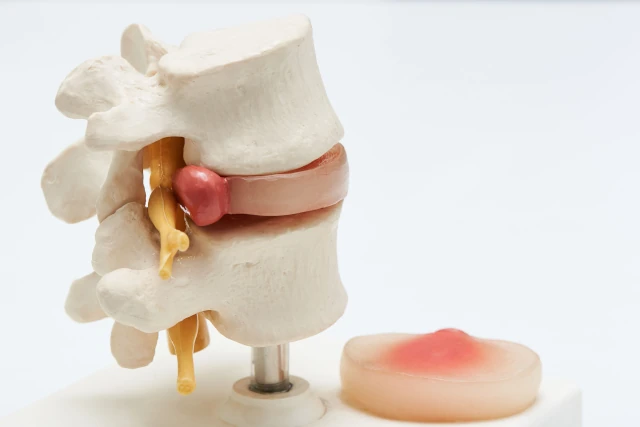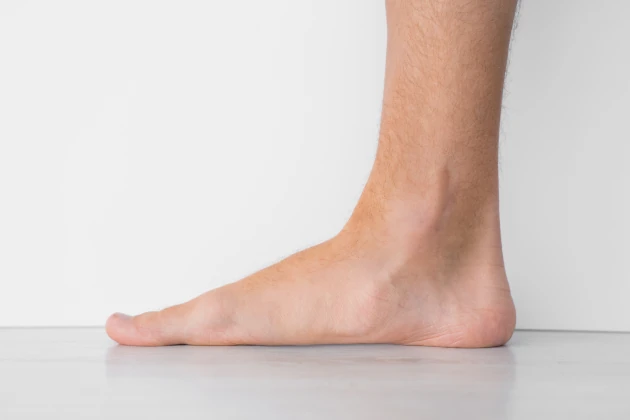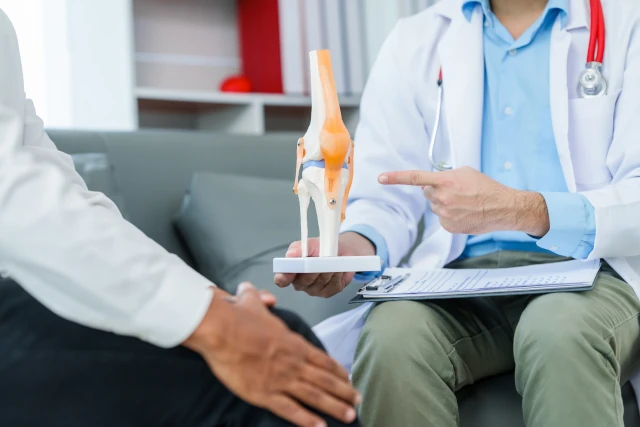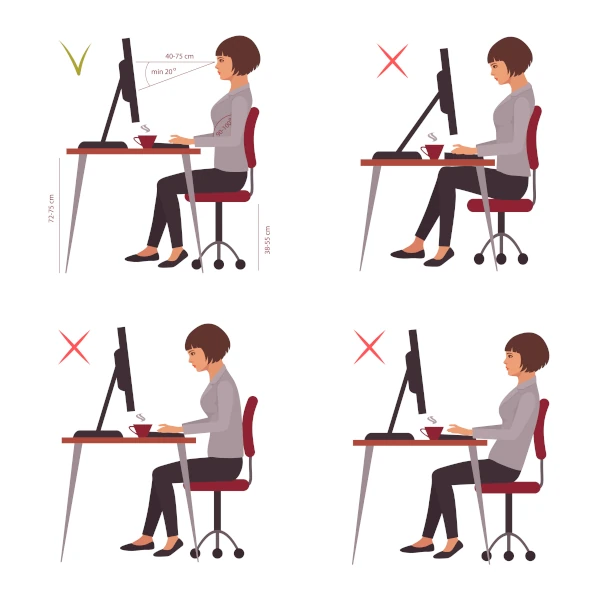
Bulging Disc vs. Herniated Disc: Symptoms, Causes, Treatment & Exercises for Back & Neck Pain Relief
- Dr. Deepika Rai (MPT)
Connect with our expert physiotherapist for personalized physiotherapy advice.
Back and neck pain are common complaints, often linked to spinal disc problems like bulging discs and herniated discs. While these conditions share similarities, they differ in severity and treatment approaches. Understanding the symptoms, causes, and treatment options—including exercises, surgery, and non-invasive methods—can help manage chronic low back pain, sciatica, and nerve-related discomfort.
Bulging Disc vs. Herniated Disc: Key Differences
What is a Bulging Disc?
A bulging disc occurs when the spinal disc extends beyond its normal boundary but does not rupture. It often results from age-related wear (degenerative disc disease) or repetitive strain.
Common symptoms:
- Dull, aching pain in the lower back or neck
- Radiating discomfort (if pressing on a nerve)
- Stiffness and reduced mobility
What is a Herniated Disc?
A herniated disc (disc protrusion) happens when the disc outer layer tears, allowing the inner gel-like material to leak. This can compress nearby nerves, leading to sharp pain, sciatica, or numbness.
Key differences (Bulging vs. Herniated Disc MRI):
| Feature | Bulging Disc | Herniated Disc |
|---|---|---|
| Disc Condition | Intact, but expanded | Ruptured, leaking inner material |
| Pain Type | Dull, widespread | Sharp, localized, often radiating |
| Nerve Compression | Less likely | More likely (severe sciatica or weakness) |
Causes & Risk Factors
Both conditions may stem from:
- Degenerative disc disease (natural aging)
- Poor posture and heavy lifting
- Spinal stenosis (narrowing of the spinal canal)
- Retrolisthesis (vertebral misalignment)
- Trauma or sudden injury
Symptoms: Bulging Disc vs. Herniated Disc
Bulging Disc Symptoms
- Lower back bulging disc: Aching pain, stiffness
- Bulging disc in neck: Neck pain, shoulder tension, headaches
- Mild nerve irritation (tingling in arms/legs)
Herniated Disc Symptoms
- Severe shooting pain (e.g., sciatica down the leg)
- Numbness or weakness in limbs
- Bowel/bladder issues (if severe, requires emergency surgery)
Diagnosis: MRI & Imaging
A magnetic resonance imaging (MRI) scan is the gold standard for diagnosing:
- Disc protrusion
- Nerve compression
- Retrolisthesis or stenosis
Treatment Options
Non-Surgical Treatments
- Physical Therapy & Exercise
- Stretching (yoga, McKenzie exercises)
- Core strengthening (planks, pelvic tilts)
- Medications
- NSAIDs (ibuprofen), muscle relaxants
- Injections
- Epidural steroid injections for nerve pain
Surgical Treatments
- Discectomy (removing herniated disc material)
- Spinal fusion (for severe degenerative disc disease)
Healing Exercises for Bulging & Herniated Discs
For Lower Back Pain
- Cat-Cow Stretch (improves flexibility)
- Pelvic Tilts (strengthens core)
- Bird-Dog Exercise (stabilizes spine)
For Neck Pain (Cervical Vertebrae Relief)
- Neck Retraction (chin tucks)
- Shoulder Blade Squeezes
- Gentle Neck Rotations
Prevention & Long-Term Care
- Maintain good posture (ergonomic chairs, proper lifting)
- Stay active (low-impact exercises like swimming)
- Manage weight to reduce spinal pressure
Conclusion
Whether you have a bulging disc or herniated disc, early diagnosis and proper treatment (including exercises, therapy, or surgery) can significantly improve pain and mobility. If chronic low back pain or nerve symptoms persist, consult a specialist for a personalized plan.
Need relief? Try these healing exercises and explore non-surgical treatments before considering surgery.
Connect with our expert physiotherapist for personalized physiotherapy advice.



